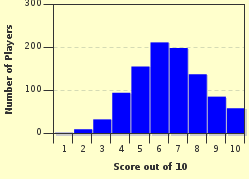Quiz Answer Key and Fun Facts
1. Which of these animals gives birth to a cub?
2. What is one name for a young oyster?
3. A kit has which of these creatures as parents?
4. One name for a baby cod is a codling.
5. A grouse's offspring is called by which name?
6. What is a young hippopotamus known as?
7. A turtling is a baby turtle.
8. Which type of bird does a flapper grow up to be?
9. The parents of a whelp are which creatures?
10. By which of these names can a young salmon be known?
Source: Author
misstified
This quiz was reviewed by FunTrivia editor
crisw before going online.
Any errors found in FunTrivia content are routinely corrected through our feedback system.


